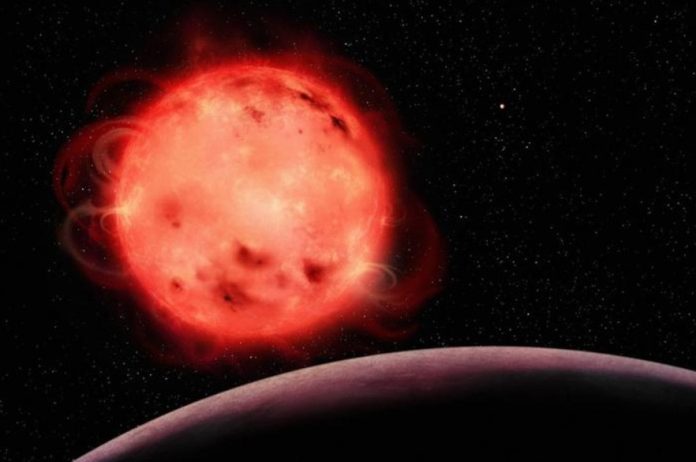
Scientists led by a team at Université de Montréal have delved deeper into the mysteries of the TRAPPIST-1 system, a group of seven Earth-sized planets orbiting a star 40 light-years away from us.
This system has intrigued scientists since 2016, due to the possibility that it could support human life.
TRAPPIST-1’s star is much smaller and cooler than our Sun.
Three of its seven planets are in the star’s habitable zone, the area where conditions might be right for liquid water to exist, fueling hopes of discovering alien life.
Researchers used the James Webb Space Telescope (JWST), one of the most powerful telescopes ever built, to study TRAPPIST-1 b, the closest planet to the system’s star.
They observed this planet as it passed in front of its star, using a technique called transmission spectroscopy.
This allows scientists to study the planet’s atmosphere by examining how it alters the light from its star as the planet moves in front of it.
This technique helped scientists find clues about what the planet’s atmosphere is made of.
They found that this planet likely doesn’t have a thick, clear atmosphere filled with hydrogen.
However, the scientists couldn’t rule out the presence of thinner atmospheres, possibly composed of water, carbon dioxide, or methane, or even an atmosphere similar to Titan’s, one of Saturn’s moons.
The team faced challenges due to the star’s own activities, such as flares and spots, which can distort the data. These activities, called “stellar contamination,” can create false signals, making scientists think they’ve detected something in a planet’s atmosphere when they haven’t.
The star’s unpredictable flares affected the measurements, making it difficult for scientists to model and interpret the data correctly. This emphasizes the need for caution and thoroughness when studying such distant worlds, especially those around red dwarf stars like TRAPPIST-1, which are known to be particularly active.
The findings are crucial because they provide a deeper understanding of the relationship between a star and its planets, showcasing the influence of the star’s characteristics on the study of its orbiting planets.
Understanding the nature of exoplanets and their atmospheres is fundamental in the search for alien life. The careful study of how stars can affect the data collected about their planets is vital, as it enables scientists to distinguish between the true characteristics of the planets and the distortions caused by their stars.
This is only the beginning. More extensive observations and analyses are planned for TRAPPIST-1 and its fascinating planets. The research highlighted the efficiency of Canada’s NIRISS instrument aboard the JWST in investigating the atmospheres of Earth-sized exoplanets.
These initial explorations are stepping stones in our quest to understand the universe better, to find possible habitable environments outside our solar system, and maybe, one day, to discover if we are not alone in the universe.
This new research provides valuable insights into TRAPPIST-1 b and its star, emphasizing the significant role of stars in the study of their planets.
It highlights the challenges posed by stellar activities and sets the stage for more detailed studies of this intriguing exoplanetary system in our quest to find potentially habitable worlds and alien life.
Follow us on Twitter for more articles about this topic.



